We’re joined this week by Tatiyana Cure to discuss the evolution of hiring in the modern world today. She helps managers and HR teams evaluate their talent/hiring strategies – a lot of which she has shared via her book, Hire to Win.
About Tatiyana Cure
Tatiyana brings her extensive background as an executive recruiter and talent acquisition leader to her work with coaching managers. Having partnered with thousands of hiring managers, in a wide variety of industries, she is massively passionate about helping managers achieve business goals through effective talent strategies. So passionate in fact, she published her first book ‘Hire to Win: Manager’s Practical Guide for Attracting and Interviewing Top Talent‘ to share a blueprint for those looking for a step-by-step guide to hiring!
Seeking any opportunity to learn something new and challenge herself – be it personally, professionally, or just for fun – Tatiyana recently learned to ride a motorcycle and got her M1 license. While she doesn’t necessarily plan for this to be her primary mode of transport, she thought it best to be fully prepped in the event she should find herself in a James Bond movie. Speaking of which, Tatiyana also enjoys flying trapeze and kitesurfing.
Hop on the new episode below:
Points of Interest…
- Starting an effective hiring strategy 2:21
- Tatiyana’s two key components when hiring 3:35
- Misconceptions made by firms when hiring 5:26
- Detailed job descriptions can aid diversity 14:50
- The merits of Test Projects when hiring 18:45
Starting an Effective Hiring Process
Tatiyana considers herself to be someone who drives business results through talent strategies. While recruiting is the obvious port of call, what Tatiyana does goes beyond that – we’re talking about learning and development, career development, career growth, succession planning, and so forth. Right now, she is providing expertise working internally for a Tech company within the logistics and freight industry.
“That’s my full-time job – but, by night, I put my superhero cape on and I try to serve an entrepreneur who is looking to make their first hire or expand their team, or indeed help someone who has been hiring in the past but – as you said; the market is changing – so they realize they need to change their talent strategies.”
Admittedly, I don’t know a huge amount about HR, hiring, and recruiting. In fact, when I think about recruiting, my brain immediately goes to this more direct, almost direct sales strategy to go find candidates, reach out to them directly, and then literally pull them in. Or is that hiring? Are they the same thing? So many questions…
How can we go about categorizing this whole process of getting the right people into your business? What are some of the nuances that we should be aware of? Where to begin? As it turns out, we must refer to our friend, the funnel.
“You don’t have to hire every single person that you attract or recruit, but you must have a funnel at the top. The top of the funnel has to be quite large to enable you to identify the right person in the short term and long term.”
Tatiyana’s Two Key Components When Hiring
So, you may have a really great person who is attracted to you – or who you attracted by means of sourcing and/or recruitment. However, perhaps it’s not a good fit long-term for whatever reason. And that’s OK. While you may not hire them straight away, you perhaps decide you’re a good fit for something, so you opt to keep them in your pipeline for future reference, should a relevant role come up. Or, as Tatiyana puts it…
“You want to create THE BEST team, but you probably won’t have an entire team of quarterbacks or a whole team of defense players either. You need a good mix. Therefore, see who’s currently on your team and identify the gaps. Where are the challenges, and where are you looking to go? That’s how you start to hire the right person to help achieve that goal.”
OK, recognizing that an entire team of people highly skilled in one area (AKA quarterbacks) doesn’t necessarily convert to the execution of one’s business goals is a key component to effective hiring. What is Tatiyana’s second component to hiring?
“Your organization, irrespective of size, has a DNA that makes it unique. Some companies refer to it as ‘culture.’ Every time you hire someone else to the team, it disrupts that culture. So, you want to make sure it disrupts it in a positive way, that it brings something positive to the team versus something negative.”
Misconceptions Made by Firms When Hiring
As ever, I’m keen to learn about any recurring pitfalls firms may encounter when starting such a process as their talent acquisition strategies. What has evolved in terms of hiring in Tatiyana’s experience?
“Gone are the days of posting a job and – all of a sudden – you get thousands of candidates and you get to choose who you hire. If someone declines the role, no problem; you simply turn your attention to the second in line, or third, because there are so many to choose from! That is the biggest pitfall; thinking about hiring in that way.”
So how should you think about it? Well, it all starts with…
1. Drafting a tailored job description. You can’t just copy and paste an affiliated job description and hope for the best. This will simply result in an influx of arbitrary potential candidates courtesy of your super vague job description. When crafting your job description, you really need to do a deep dive on the challenges you’re seeking to rectify, and what are the skills necessary to solve said challenges? Try and foretell the questions that potential candidates might ask you (“what does the career path for this role look like?”), and pre-emptively include the applicable answers. Another evolution in terms of hiring that Tatiyana has experienced is…
2. An expedient interview process. For instance; candidates aren’t willing to go through a protracted 15-step mysterious interview process anymore. The current expectation is transparency upfront and a super fast turnaround. If it’s going to take you two weeks to revert to them about the role, they will lose interest.
3. Expecting the unexpected post-job offer. For example, don’t expect your successful candidate to be bowled over solely by an impressive pay packet – instead, expect questions. And lots of them. Among them such valid queries regarding a benefits package; job flexibility and work/life balance; diversity, equity, and inclusion initiatives; alongside a “reverse interview” in which they get to ask you questions. And we’re not referring to the two minutes tacked on to the end of the interview where you say “do you have any questions?” That’s no longer viable in today’s market.
In short, there is a huge shift in leverage when it comes to hiring in today’s modern world, a topic ***which I address further from the 8:17 minute mark***
Detailed Job Descriptions can Aid Diversity
In Tatiyana’s experience, the more detailed you are regarding what projected success looks like in three-to-six-months time in your job description, the more likely you will be to not only attract the right candidate but lead to a diverse hire.
“What I have found has helped in terms of diversity hiring. Minorities, especially women, will typically look at a job description that says ‘needs to be an Excel Expert’, and they’ll say ‘Well, I’m not an Excel Expert, so I won’t apply.’ However, if you outline what an Excel expert actually means in terms of your organization – like ‘you need to do pivot tables and look-ups’ – then they’re more likely to say, ‘Yes, I can do that, I’ll apply.'”
The moral of the story is, the more forthcoming you are in your job descriptions, the better. Tatiyana expands on how to ***get your team involved in assessing the skills required for your job description from 15:26 minute mark***
Side note: our Agency Profit Toolkit is a one stop shop for you to be able to outline some of these crucial profitability numbers to a potential buyer. Spreadsheets, templates and training videos, you name it, it’s all in the toolkit. Grab yours free at the link below:
The Merits of Test Projects
We here at Parakeeto almost never recruit without a paid test project as part of the recruiting process. So, we offer the candidate a consulting rate. It’s usually a couple hours of work that they can do in the evenings or over a weekend, which really gives everybody a sense of what the actual work feels like to do and what is it like to work with us.
Therefore, I’m super keen to see what Tatiyana’s thoughts on Test Projects are – even if I have biased the shizzle out of the question in the process!
“I will say I’m pro test projects – a hundred percent – especially when it comes to assessing technical skills. It’s much better to create a project to assess Excel, for example, versus saying, ‘What would you do with this Excel situation?’ Also, I would say you are ahead of the curve to recognize that the candidate is investing their time.”
If someone is investing time, one of our most precious and lucrative assets, then you should be paying them for it – not asking them to volunteer it. A modern-day candidate will be exceedingly unwilling and therefore unlikely to devote what can sometimes be half a day or more of their time to such a project.
This brings us neatly to the importance of Benefits and Compensation Packages in the current market, which *** me and Tatiyana tackle from 20:52 minutes***
Key Takeaway…
By way of a recap, the below steps should help you carve the roadmap towards your business achieving its goals. What is going to get you there? So, you need to consider the following when hiring…
- The technical skills required for the position. Are you willing to compromise on these skills? For instance, if you’re looking for a “plug-in and play” person because you’re unable/unwilling to invest time into training them, they’re probably going to leave within a year. You need to keep that person engaged and invested in the company ***more on this from 11:45 minutes***
- Consider your work culture. Look at your existing team dynamics. Once you identify the gaps that need filling, then ask what type of hire will positively affect your team. For example, will someone leave if you hire someone outside versus promoting them?
- Have your succession plan. Is there someone second in line you can start honing for the role? Otherwise, you’re going to be in the same position hiring for that same job in a year.
- Be expedient and have the necessary answers ready. What does the life cycle of your required role actually look like long term? A little bit of thinking goes a long way in terms of hiring in a proactive way.
- Forecast resource planning! If you need to hire somebody yesterday, you’re putting yourself in a bad position, especially in this climate where you don’t have nearly as much leverage
The bottom line is; it’s important to bring direct human involvement when conducting talent strategies. In conjunction with that, you should always continue to test and question the strategies that may have been successful in the past but potentially may no longer be serving us.
See more from Tatiyana…
- Tatiyana’s LinkedIn @tatiyanacure
- Hire to Win
Did you learn anything new from this episode? Let us know in the comments below! We have helpful blogs designed to bolster your agency profitability, such as How To Calculate Your Billable Employee Cost-Per-Hour.
Our next installment of #APP, on October 19th, will see Marcel chat with Juliana Marulanda. Our previous blog – Episode 96 with Greg Hickman – can be viewed here…
Avid #APP Listener?!
We would be eternally grateful if you could leave us a review…
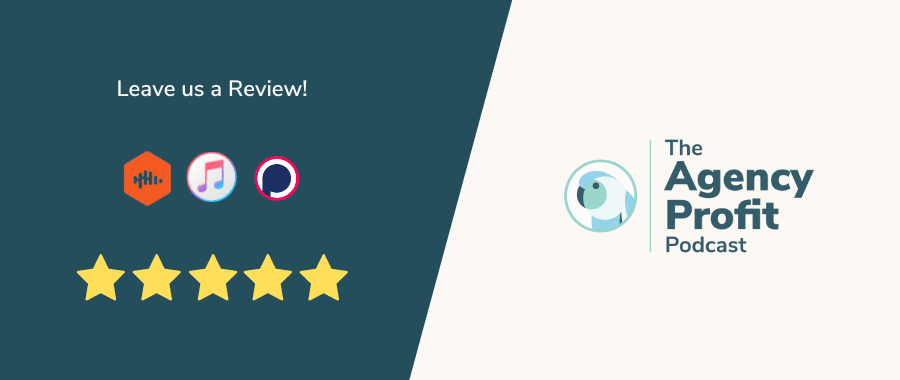
Agency Profitability Tool Kit
If you’re looking for more resources to help you improve your agency’s profitability, check out the Agency Profitability Tool Kit. It’s full of templates and checklists used when consulting clients. This helps them improve profitability by over 100% in under 60 days.
Fill out the form below for your copy!

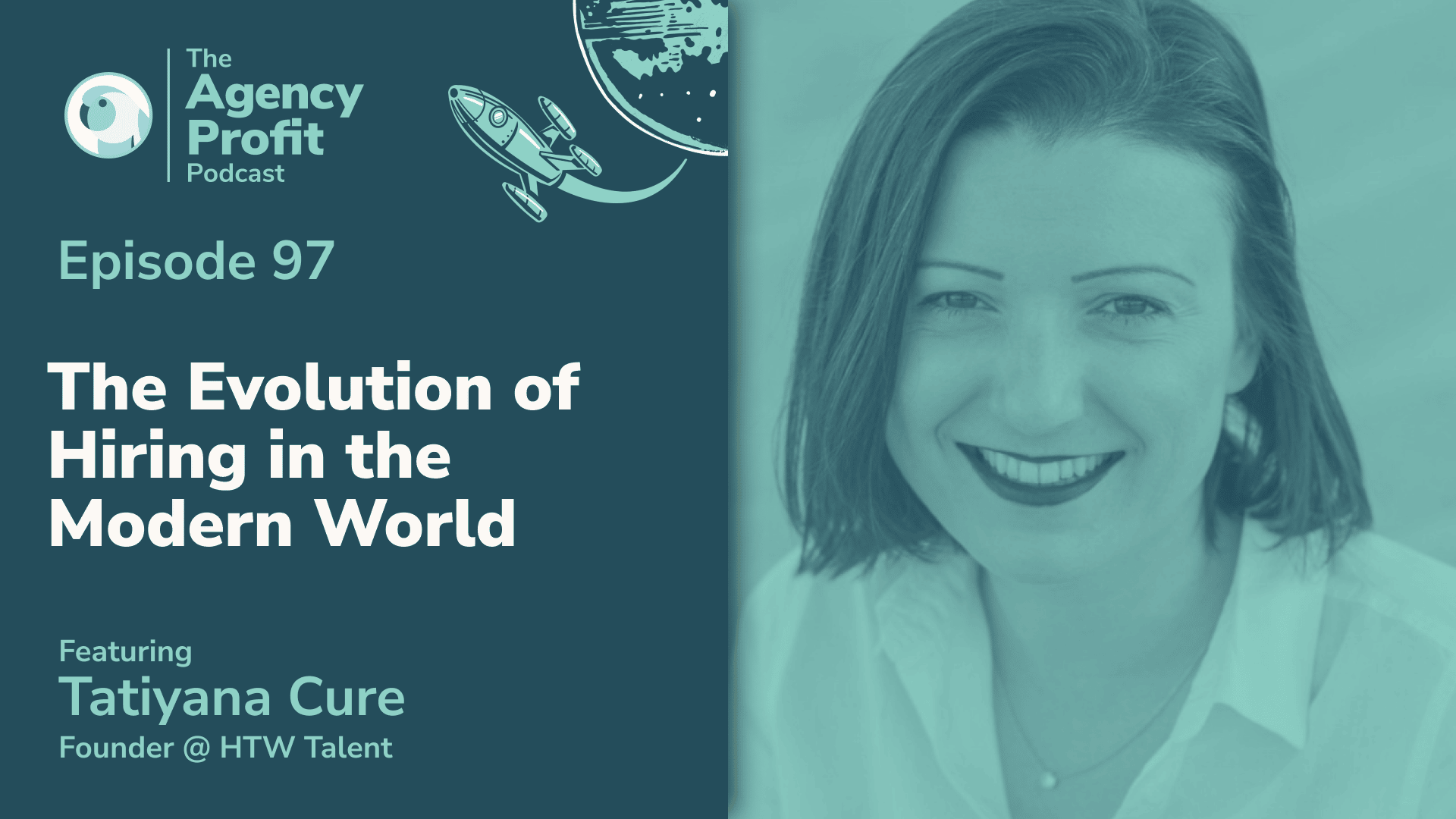


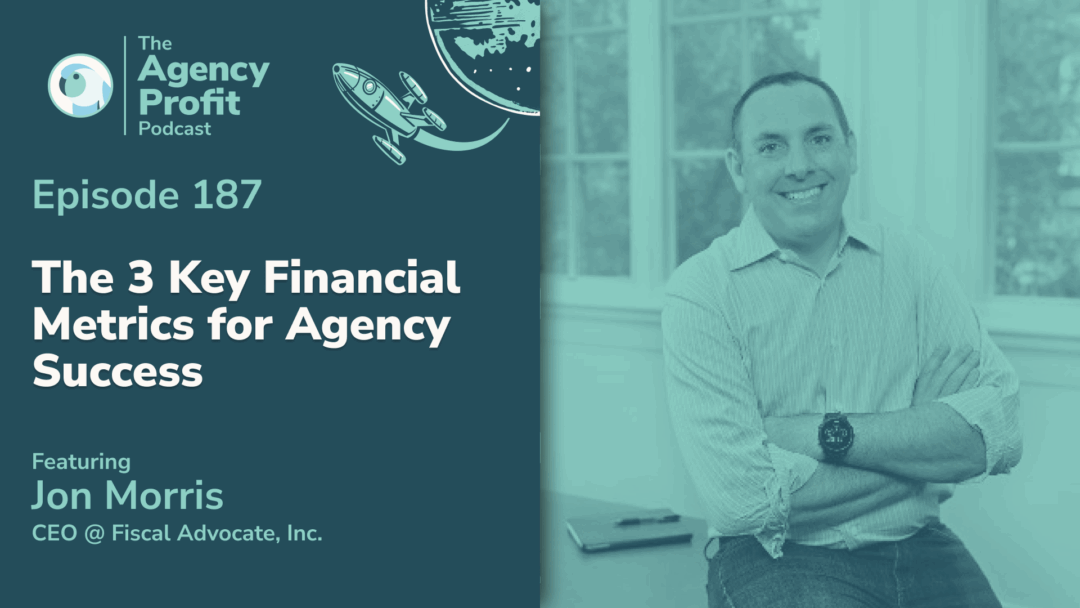
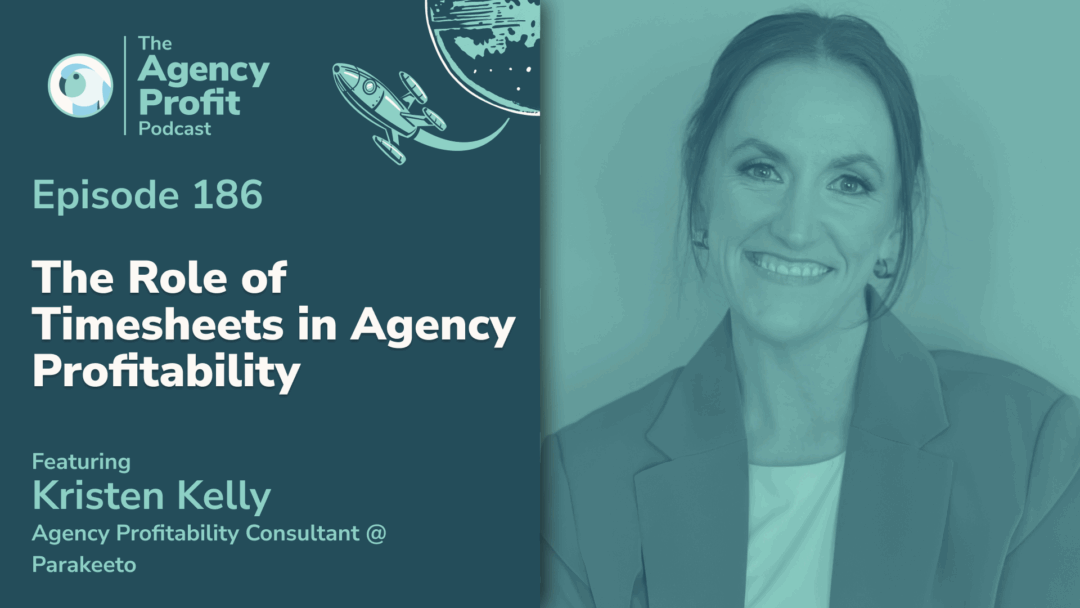
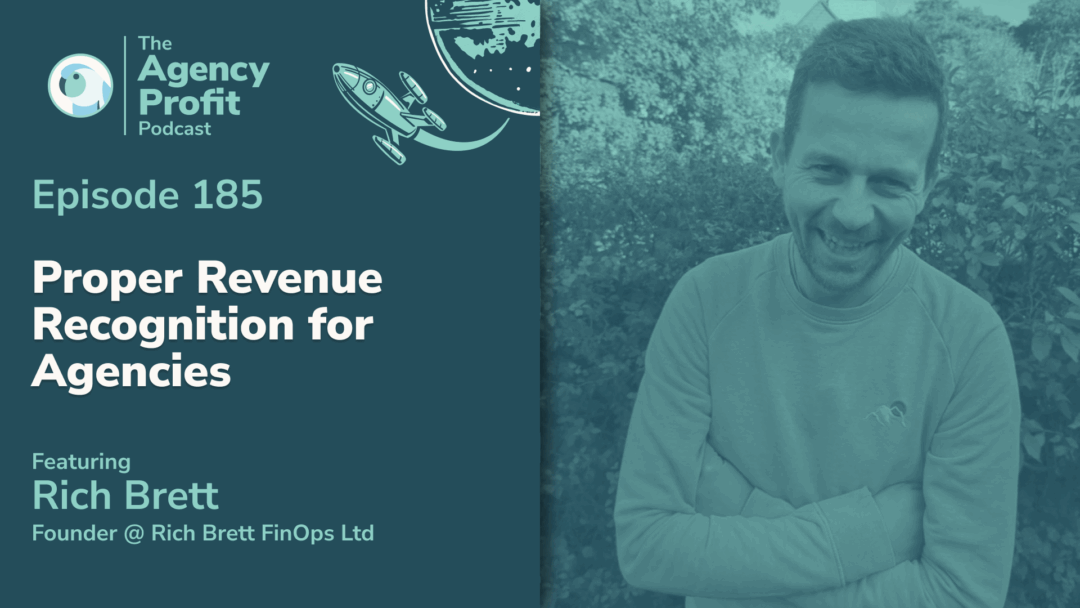

0 Comments